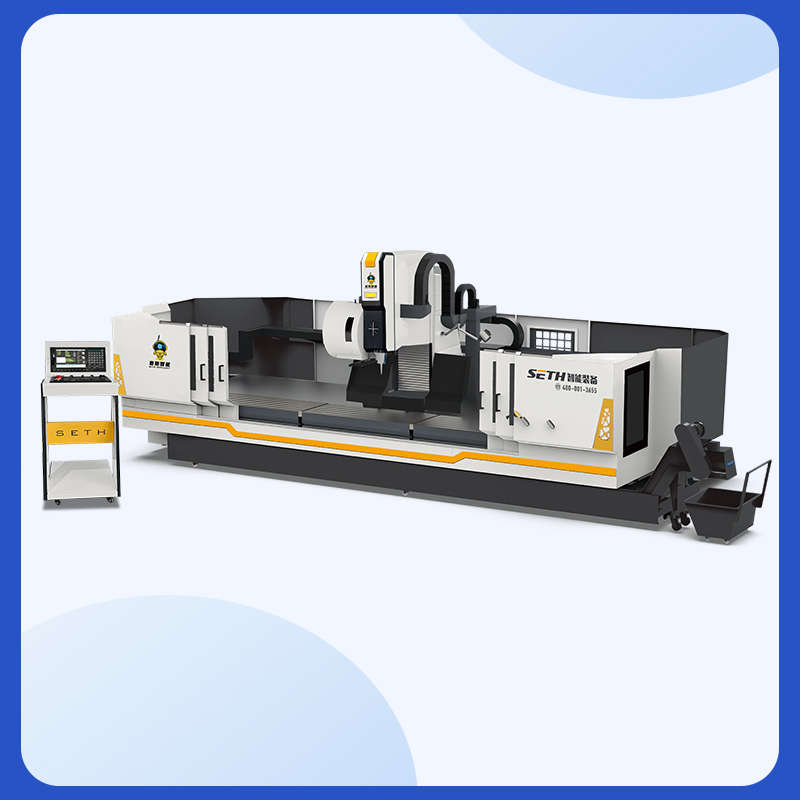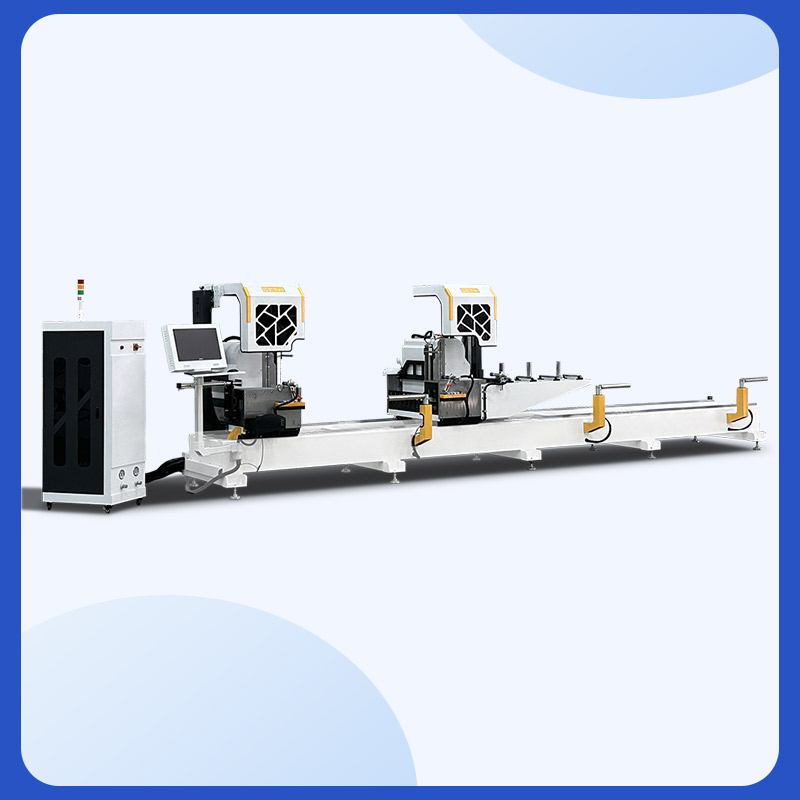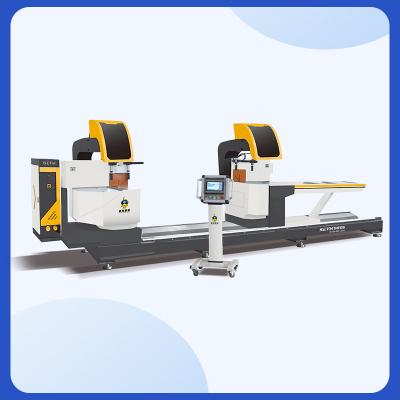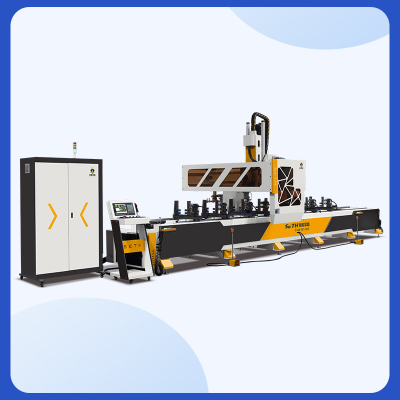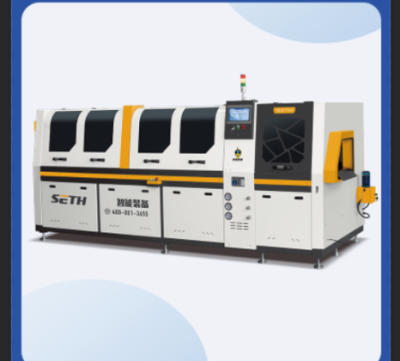Common Faults and Solutions of Aluminum Profile Processing Equipment
1. Equipment Failure to Start Symptom The machine cannot power on or start operation, with no response from control buttons or spindle. Causes & Solutions Motor Burn-out Reason: Overheating due to overload (e.g., excessive cutting thickness, overly fast feed rate) .
Solution: Replace the burned motor; optimize processing parameters (reduce feed rate for thick profiles) and install thermal protection devices. Phase Loss or Power Supply Issues Reason: Missing phase in external power supply, loose neutral wire, or aluminum chips causing short circuits in the motor junction box . Solution: Check power voltage with a multimeter; tighten loose wiring terminals; clean aluminum chips in the junction box and install dust-proof covers. Faulty PLC Control Unit Reason: Rare but possible PLC burnout, indicated by unresponsive operation screen . Solution: Replace the PLC unit; check for voltage surges and install surge protectors.
2. Deteriorated Machining Precision Symptom Dimensional deviation (exceeding ±0.03mm), elliptical errors in circular processing, or inconsistent positioning. Causes & Solutions Axis Linkage Circularity Error Reason: Poor axis positioning accuracy, improper lead screw gap compensation, or misadjusted rotation drivers .
Solution: Adjust position loop gain; recalibrate lead screw gap compensation; inspect and repair induction synchronizer interface boards. Dynamic Feed Error Between Axes Reason: Misaligned feed dynamic parameters, worn transmission chains, or faulty position detection components . Solution: Re-calibrate inter-axis dynamic parameters; replace worn linear guides/ball screws; check position feedback cables for poor contact. Overshoot During Movement Reason: Too short acceleration/deceleration time or loose connection between servo motor and screw . Solution: Extend speed change time in the CNC system; tighten motor-screw couplings; reduce position loop gain appropriately.
3. Poor Cutting Quality (Burrs, Uneven Sections) Symptom Excessive burrs on profile surfaces, non-perpendicular cutting sections, or rough finishes. Causes & Solutions Insufficient Lubrication/Cooling Reason: Lack of micro-lubrication system, using low-efficiency coolant (e.g., saponification liquid), or dry cutting .
Solution: Install a micro-lubrication device (0.05ml/min oil consumption) for atomized cooling; replace with aluminum-specific coolant; ensure continuous lubrication during high-speed cutting. Low Saw Blade/Spindle Performance Reason: Dull blade teeth, insufficient blade stress, or spindle runout exceeding 0.01mm . Solution: Replace with high-quality carbide saw blades; regrind dull blades; repair/replace spindle to ensure runout ≤0.01mm. Material/Clamping Issues Reason: Poor straightness of aluminum profiles or unstable clamping .
Solution: Pre-inspect profile straightness before processing; use 8-group pneumatic clamps to ensure firm positioning.
4. Automatic Tool Change Malfunction Symptom Tool change delay (exceeding 3 seconds), failed tool clamping, or tool magazine positioning error. Causes & Solutions Mechanical Obstructions Reason: Aluminum chips jamming the tool magazine rail or manipulator. Solution: Clean chips from the tool magazine and guide rails; install chip conveyors for real-time collection. Sensor/Actuator Failure Reason: Faulty tool position sensor or air pressure insufficient (0.6-0.8MPa required). Solution: Replace defective sensors; check the pneumatic system for leaks and adjust pressure to standard range. CNC Program Error Reason: Incorrect tool change sequence in the processing code. Solution: Verify and revise the tool change program; call preset macro programs for standard tool change sequences.
5. Spindle Abnormal Noise/Vibration Symptom Loud noise during spindle operation, abnormal vibration, or reduced rotation speed. Causes & Solutions Worn Spindle Components Reason: Lack of lubrication leading to bearing wear or spindle imbalance. Solution: Replace worn bearings; rebalance the spindle; implement automatic lubrication for spindle components. Overload Operation Reason: Spindle load exceeding rated power (e.g., 7.5kW/12kW for typical models). Solution: Reduce cutting depth/feed rate; select appropriate spindle power based on profile thickness.
